When the beans are at 11-12% moisture, they are removed from the parijuelas and bagged. Each bag has the parijuela number that it came from. The bags are then weighed and the results logged.
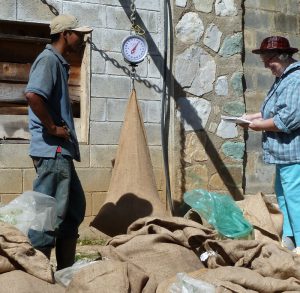
Coffee beans have a hard shell covering the bean. Here is the coffee bean anatomy introduced in the Processing the Coffee Cherries article. This illustration from Wikipedia shows the cherry anatomy.
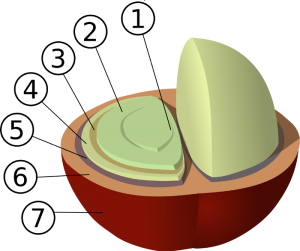
Structure of coffee berry and beans:
- centre cut
- bean (endosperm)
- silver skin (testa, epidermis)
- parchment (hull, endocarp)
- pectin layer
- pulp (mesocarp)
- outer skin (pericarp, exocarp)
The last step is hulling, or removing the parchment. Processing removed parts 7, 6 and 5. Hulling is the step that involves removing part 4, the parchment. Parts 3, 2 and 1 form the final green coffee bean. Some companies remove part 3, the silver skin, with a machine called a polisher. Most green coffee sold in North America has the silver skin still on.
In these three photos, we see the parchment being removed.
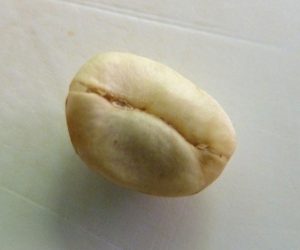
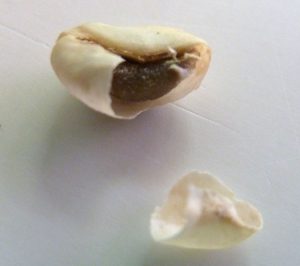
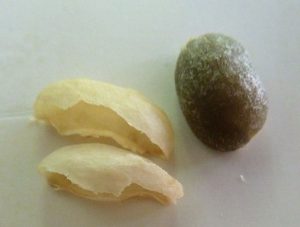
Parchment is removed with a hulling machine. Hullers work by rubbing the beans to crush the parchment, then blowing the light parchment pieces off. Hullers may also sort the beans by size.
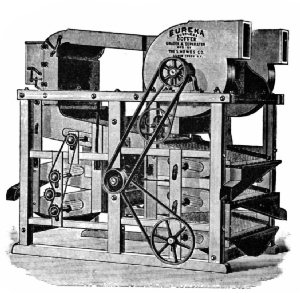
In this photo from All About Coffee (1922), by William H. Ukers, we see an old Eureka Separator and Grader.
Hulling Parchment Coffee
This video shows a modern machine hulling coffee from Matias’ plantation. The output is sorted into two sizes: normal and one for small rejects. These rejects are usually broken beans or peaberries (a coffee pit that did not grow into two beans forming a single bean.)
The next stop for these green beans is the roaster and then a cup of tasty coffee.
